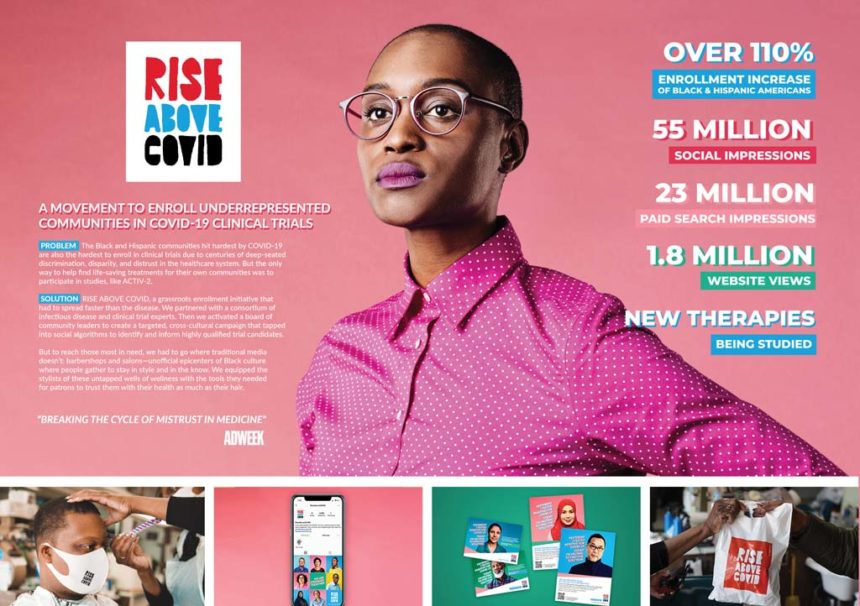Gold
University of California, the National Institute of Allergy and Infectious Diseases and Klick Health
Rise Above COVID
As COVID-19 pushed health disparities into the spotlight, those fighting the disease faced a deadly dilemma. On the one hand, the virus hits communities of color much harder, and Black Americans are 3.5 times more likely to contract the virus.
At the same time, 400 years of mistrust in the medical system made voters of color less willing to participate in the clinical trials that could result in effective vaccines. While people of color make up 32% of the U.S. population, they only account for about 5% of trial participants.
To reach those most in need, this campaign knew it needed to go far beyond the traditional media and tactics of clinical trial recruitment. Instead, it went to barbershops and salons — unofficial epicenters of Black culture where people gather to stay in style and in the know.
Partnering infectious disease and clinical trial experts with community leaders, it created a cross-cultural message blitz, tapping into social algorithms. And it reached deeply into Hispanic and African-American culture, with messages that weren’t merely translated but resonated. It also equipped stylists with the tools they needed for patrons to trust them with their health as much as their hair.
While the campaign began in 2020, it continued into 2021, and enrollment is still rising, helping researchers test a variety of new therapies. It resulted in a more than 110% enrollment increase of Black and Hispanic Americans, with 55 million social impressions, 23 million paid search impressions and 1.8 million website views.
Silver
Moderna and Spectrum Science
Stop CMV Silence/CMVictory
Most women don’t even know what cytomegalovirus (CMV) is or that it’s the leading cause of infectious congenital disabilities worldwide. This two-phase effort starts with an awareness campaign fashioned after consumer advertising to overcome that recruiting challenge. Powerful, diverse images invite women to “talk about this silent virus.” It reached more than 1 million women, identifying 10,000 qualified leads for the trial — double its initial goal.







